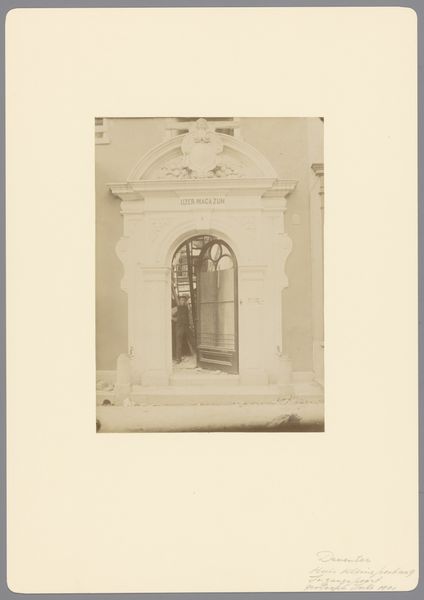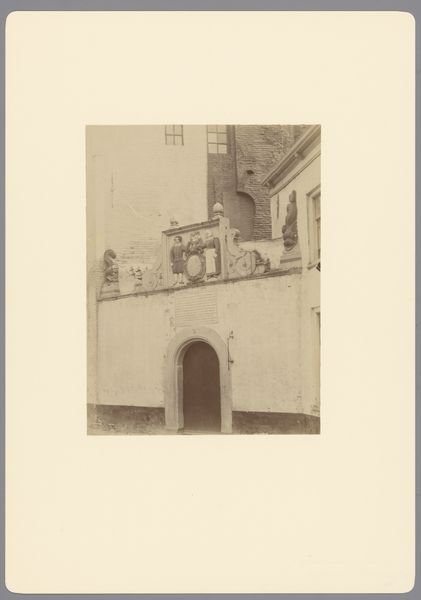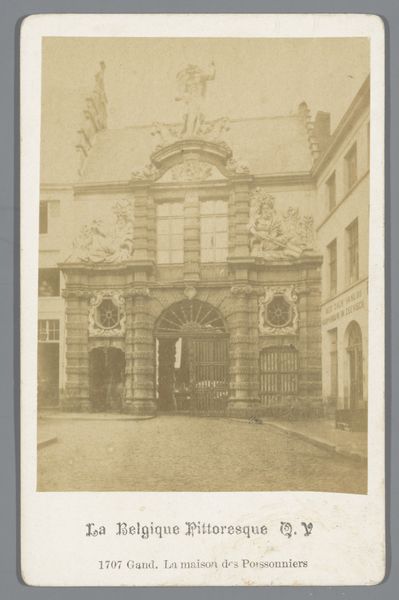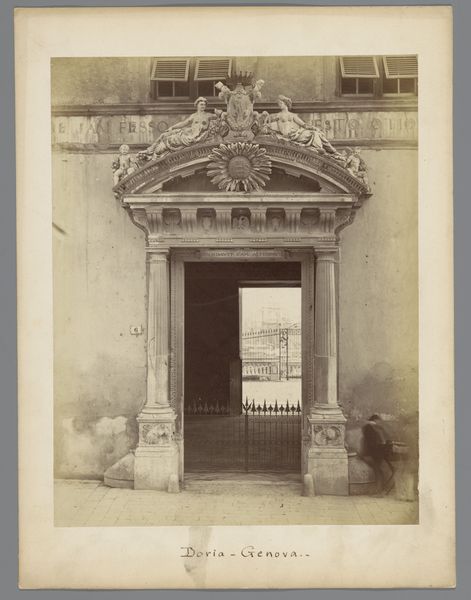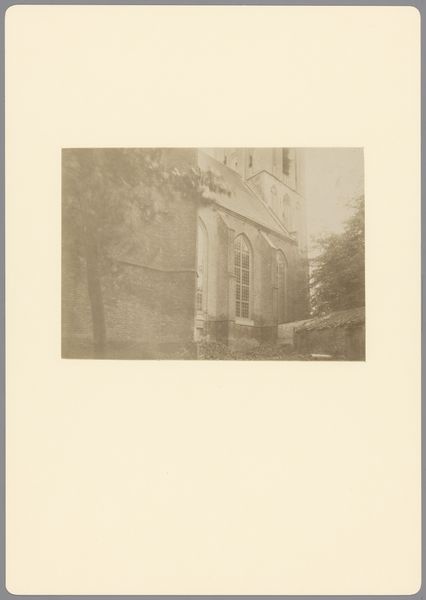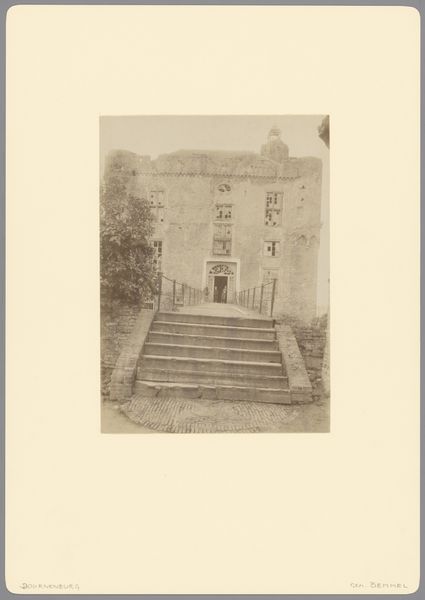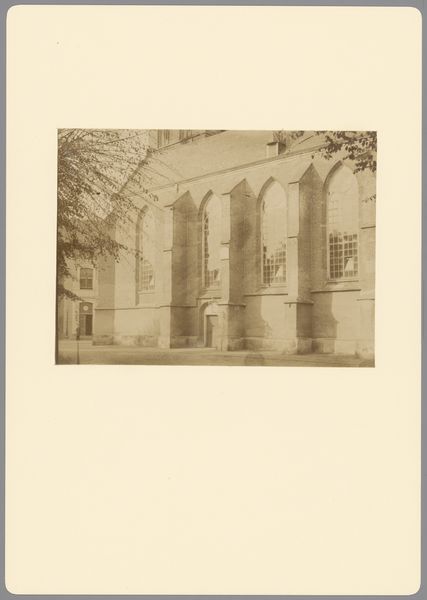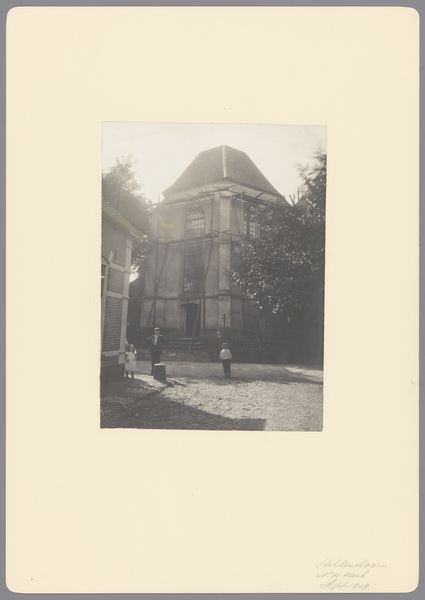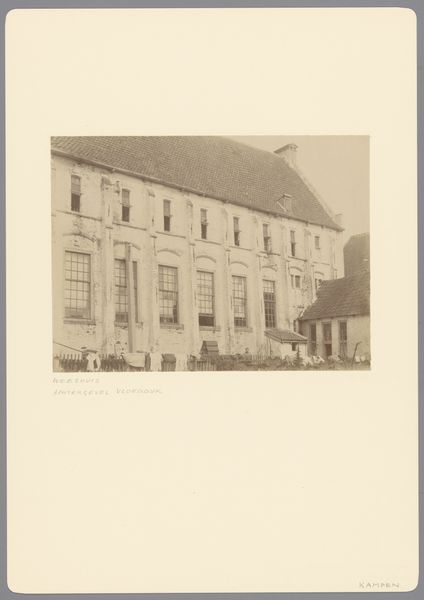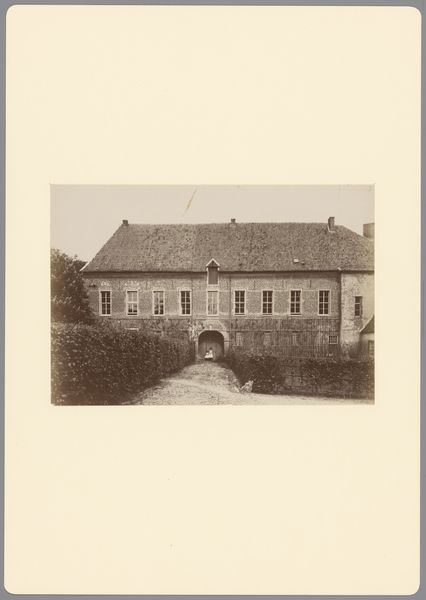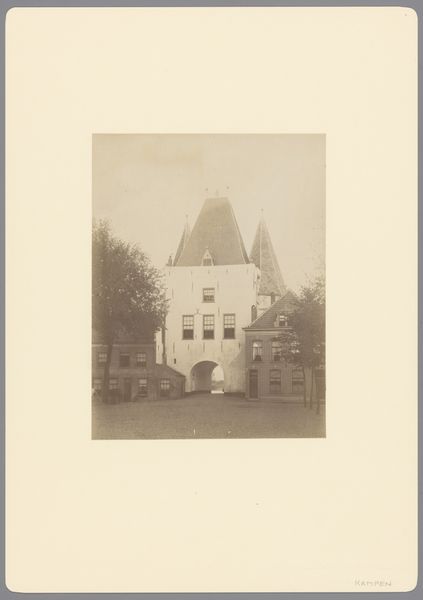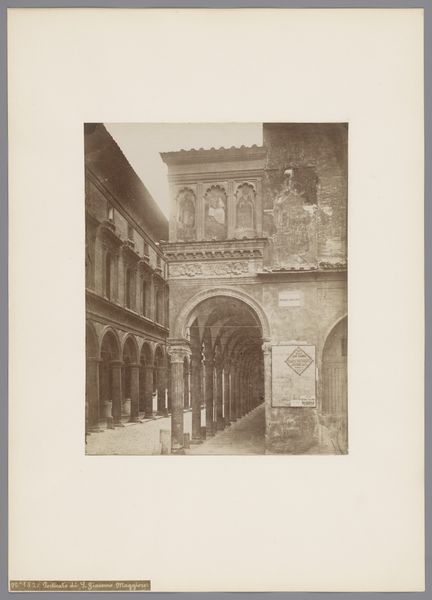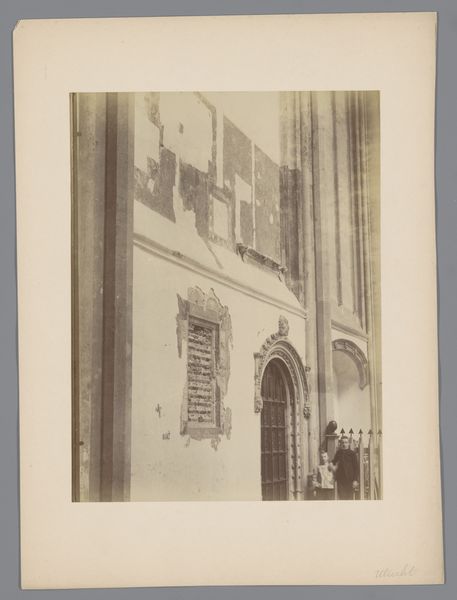
Dimensions: height 231 mm, width 172 mm
Copyright: Rijks Museum: Open Domain
Curator: This photogravure, created sometime between 1890 and 1920, depicts the central section of the Royal Orphanage in Buren, Netherlands. The photographer, whose name is unknown, has framed the architecture with neatly trimmed shrubbery. Editor: There's something simultaneously welcoming and unsettling about this image. The perfectly manicured shrubs almost feel like watchful sentinels flanking the doorway, which seems to recede into impenetrable darkness. Curator: Indeed. The Orphanage at Buren has a rich history. Established centuries ago, it served as a place of refuge for vulnerable children. Images like these helped convey not only the institution's physical presence, but also its role in Dutch society. We must examine how the orphanage, as an institution, was operating in that particular area and timeframe. Editor: The lack of human presence is striking. While the architecture is grand, and the landscaping meticulous, the absence of life imbues the scene with an eerie feeling. Do we have any indications on the politics of orphanages in the area at the time? Who benefitted, and were they also potentially sites of oppression for the orphans who lived there? The way that building looks suggests possible abuse. Curator: Absolutely. Orphanages were shaped by the prevailing social attitudes of the time. Records could help illuminate power dynamics and potential inequalities within the institution. Also, I should add, the politics of imagery play a pivotal role here. Images were often carefully crafted to project a certain image of the orphanage: one of order, charity, and effective social control. Editor: Which begs the question, what does the symmetry do? Does that mirror-like effect intend to lull you into a sense of false equivalency, a safe narrative that actually is a cover up for the injustices happening within that wall? Curator: Exactly. Analyzing this photograph through a lens of power and social control forces us to consider what isn’t being shown – the lives of the children. The image highlights societal expectations for the vulnerable population housed in such spaces, but obscures personal agency. Editor: Looking again, I see an inscription or plaque above the doorway that is purposefully illegible. I think this only amplifies the air of hidden narrative within the structure itself. The artist's goal seems very politically motivated. Curator: Considering the historical context, these old photographs have so much to say. It challenges us to think critically about representation. Editor: It really does, which leads us to understand so much about the present moment. Thanks for expanding the conversation around this historical work.
Comments
No comments
Be the first to comment and join the conversation on the ultimate creative platform.
